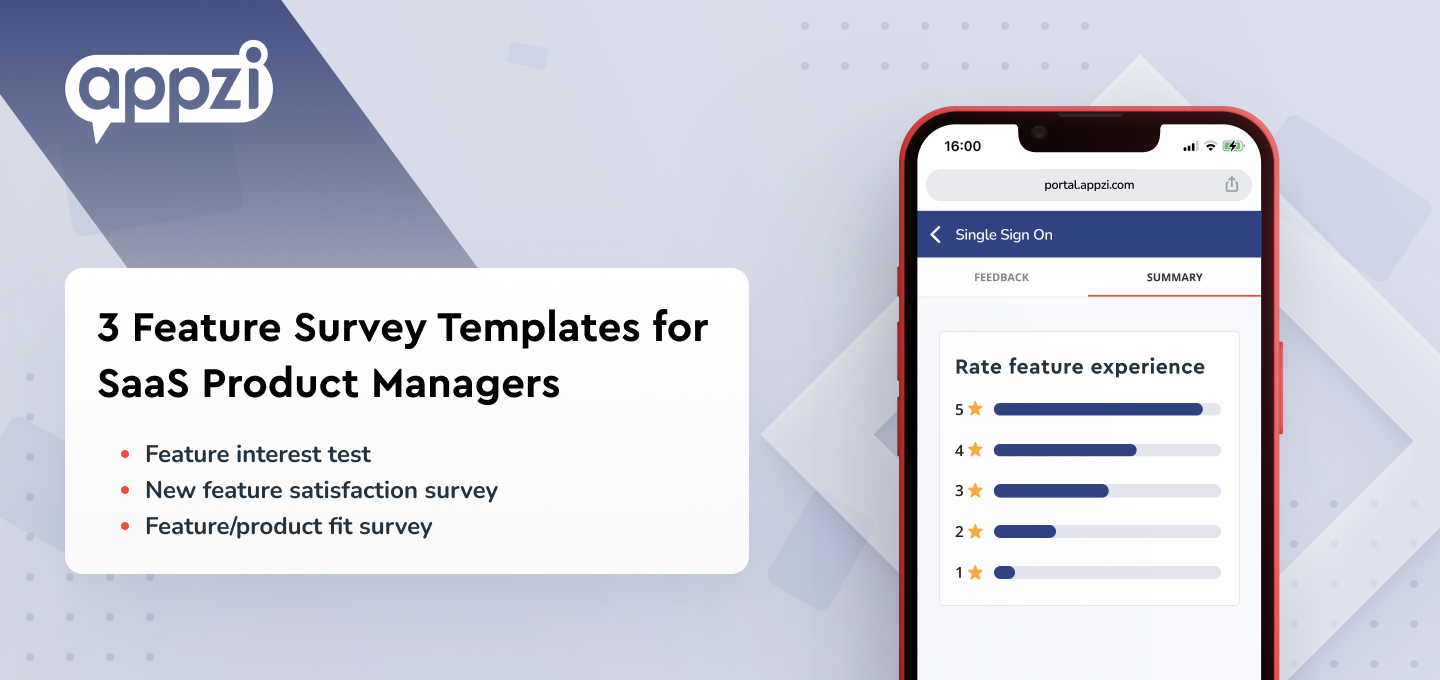3 Feature Survey Templates for SaaS Product Managers
Improving product value is an ongoing process for every SaaS company — usually through new feature launches. The more valuable and relevant features that are designed, developed and shipped by the team, the more successful a product is.
For a new feature to be successful it has to check all three boxes of the feature/product checklist:
- Be continuously used by the users – feature retention
- Have a scalable way of driving adoption – feature adoption
- Improve retention, engagement, and/or monetization for the core product.
A combination of data analytics and user research forms the basis of an effective product development process. This is where feature surveys come in handy — they let you understand customer preferences at scale with minimum resources.
In this article, we’ll cover the importance of feature surveys and showcase three simple feature survey templates that you can use before and after launching your next product feature, in order to accurately gauge user interest and satisfaction.
Table of Contents
Why are feature surveys valuable for SaaS businesses?
The best SaaS products aren’t built in a vacuum. The team needs to take various inputs, and convert them into valuable features.
Inputs can include user research, user testing, user behavior analytics, market analysis, and so on. The list is exhaustive, but if you take the time to analyze and process them thoroughly, your decision-making process will be far more effective.
Feature surveys are one of those inputs. They do three important things:
- Help you understand what your customers need.
- Show customers that you value their opinion.
- Enable you to build the best possible product.
Feature interest test
A feature interest test is a useful tool for medium and large-size SaaS companies interested in learning whether their users need a product feature before starting to design it. This type of microsurvey is a great way of saving time, money and resources. It helps prioritize features and focus the team’s attention on developing only those features that users value.
Another approach to testing feature interest is using what are known as “fake door” tests. The team at Asana performed a fake door test before working on the “Sign up with Google” feature. They wanted to figure out if customers would use it before committing development resources.
So they added the button, and when users clicked on it they saw the message: “This feature is coming soon, thank you for your interest”. The team ran the experiment for a day and they saw a statistically significant number of users who would prefer to sign up though Google Single Sign On.This confirmed it was a worthwhile feature to implement.
What can be done with the feedback you receive?
- Analyze each piece of feedback and pay close attention to the features suggested by your users. Identify common trends in their suggestions.
- If there’s a clear feature suggestion trend, discuss it with your team and decide whether it makes sense to prioritize its development.
- Always close the feedback loop by thanking your users for their suggestions.
New feature satisfaction survey
This question is vital for each SaaS company, especially when the product is mature enough and has many features. Use this template to measure user satisfaction with a new feature, and to collect improvement suggestions with the open-ended question.
What can be done with the feedback you receive?
- Visit the reporting page to view the survey results. Keep an eye on month-on-month trends to see if your improvements are valued by your users.
- Share specific feedback with stakeholders to act on customer pain points.
- Respond to customers directly to inform them that their feedback has been implemented, invite them to a user interview call, or ask for a public review of your new feature if they are happy and satisfied.
Feature/product fit survey
Feature/product fit surveys are ideal for gauging user sentiment toward one of your features. For example, if at least 40% of respondents choose “Very disappointed”, and you see that users are actively using it and it improves retention for the core product, then this feature is important for your customers.
Don’t dismiss the proportion of users who answered “Not disappointed”. There are two key ways they can generate valuable information.
Firstly, in a follow-up question, you can ask these users what features they’d like to see in your product. The answers will give you more user-generated feature ideas which will further enhance your awareness of the market, and inform your decisions around the product roadmap.
Secondly, with this survey you can analyze the relevance of both new and old features. If many users indicate they won’t miss a feature that’s been present for years in your product, you can remove it with confidence.
What can be done with the feedback you receive?
- Focus on delivering value first. Some features won’t find their feature/product fit, and it’s okay. Delete the feature and start working on another one, eventually, your team will find one that will improve your core product experience.
- Continuously run this survey for both new and old features to track their performance over time.
Closing thoughts
Every company wants to improve its product over time — but you need to start measuring if the features you’re building actually do that. You also need to assess if existing features are adding value, and if not, start removing them to avoid feature bloat. Understanding the performance of your product at a feature level can powerfully enhance it, as well as helping shape your company’s future direction. It can quite literally redefine your core product. Create surveys for churning users as well to connect to as many users as possible.
It’s time to run your first product feature survey. Take Appzi for a spin with our unlimited free plan, no credit card required.
